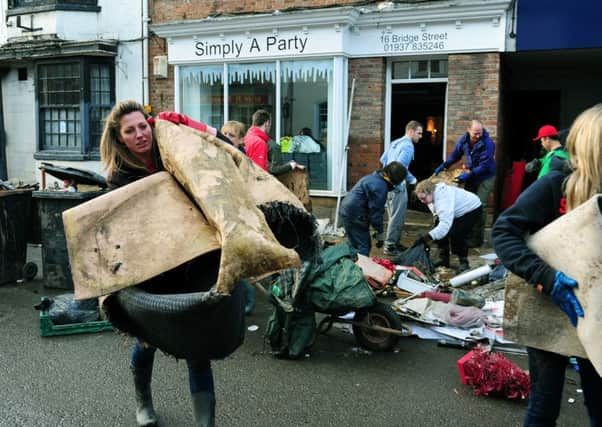30,000 tonnes of waste dumped after floods


A snapshot analysis by the Local Government Association (LGA) estimates councils have been landed with a £2.25 million landfill tax bill as a result of the clear-up after the floods.
Waste ranging from ruined furniture and carpets to broken freezers, fridges and washing machines from around 16,500 homes and businesses flooded in December is classed as “contaminated” and cannot be recycled.
Advertisement
Hide AdAdvertisement
Hide AdInstead, the floodwater-contaminated waste ends up in landfill where it faces a levy, calculated at just over £82 a tonne, for being buried in the ground.
An average of 1.66 tonnes of household goods and freezer waste has had to be collected from each of the flooded homes and businesses, the LGA estimates. The organisation is calling for all landfill tax to be returned to local taxpayers to be invested in projects that support jobs and growth in the area, instead of going to the Treasury.
Local authorities, which are still assessing the full impact of the devastation - particularly on damaged roads and bridges - in areas such as Cumbria and Yorkshire, will also need more financial support to rebuild after the floods, the LGA said.
And town hall bosses said they hoped the Government will be applying for European Union solidarity funding, set up to respond to natural disasters across the EU, to help affected communities.
Advertisement
Hide AdAdvertisement
Hide AdPeter Box, LGA environment spokesman, said: “Councils have been pulling out all the stops to help businesses and households that have been ravaged by the floods.”
He also warned councils were having to prepare for the possibility of further severe storms to ensure residents were safe and to protect homes, businesses, road networks and power supplies as much as possible.